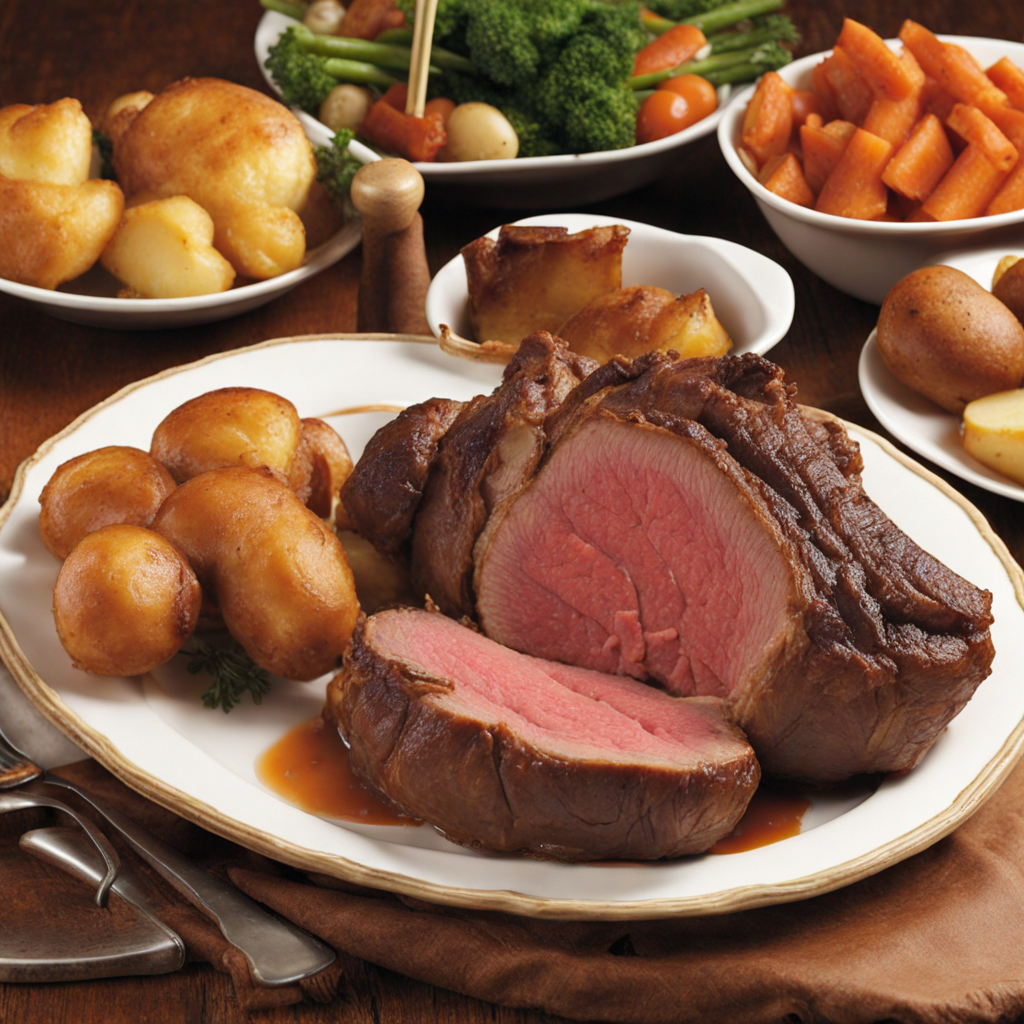Welsh Rarebit
Welsh Rarebit is a delightful dish that showcases the rich culinary heritage of the United Kingdom, particularly Wales. At its core, this comforting meal consists of a savory cheese sauce, typically made from a blend of sharp Welsh cheese, such as Caerphilly or Cheddar, combined with ingredients like mustard, Worcestershire sauce, and sometimes ale or milk. The mixture is melted and poured over slices of toasted bread, creating a harmonious balance of gooey, salty cheese and crispy, buttery toast. The use of quality cheese is essential, as it not only adds depth of flavor but also a satisfying creaminess that envelops the bread. The charm of Welsh Rarebit lies in its versatility and the way it can be tailored to individual tastes. Many variations exist, with some recipes incorporating additional ingredients such as chopped tomatoes, herbs, or even a hint of spice. This adaptability makes it an excellent choice for both a simple lunch or a more elaborate dinner party dish. When served hot, the cheese sauce bubbles enticingly, inviting diners to dig in. The melding of flavors, along with the crunchy texture of the toast, creates a unique and pleasurable eating experience that captivates the palate. Often enjoyed with a side of pickles or chutney for an added zing, Welsh Rarebit can also be elevated with the addition of accompaniments like poached eggs or sautéed mushrooms. This dish is not just a simple cheese toast; it represents a comforting meal that has stood the test of time, evoking a sense of nostalgia while being robust enough to satisfy modern cravings. Whether savored on a rainy afternoon or at a festive gathering, Welsh Rarebit is sure to introduce you to a wonderful new taste that celebrates the essence of Welsh cuisine.
How It Became This Dish
The History of Welsh Rarebit: A Culinary Journey Through Time Origin and Etymology Welsh rarebit, often humorously mispronounced as "rabbit," is a classic British dish that has intrigued food lovers for centuries. Its name is derived from the Welsh word "cennin," meaning "leek," and "rabit," an old English term referring to the meat of a rabbit. However, this dish does not contain rabbit; instead, it features a rich cheese sauce poured over toasted bread. The exact origins of Welsh rarebit are somewhat murky, but it is believed to date back to at least the 18th century. The earliest recorded mention of the dish can be found in a cookbook published in 1725 by the Welsh poet and philosopher John Wright, who referred to it as "Welsh rabbit." The dish gained popularity in Wales and soon spread across England, particularly during the Victorian era, when it became a staple in pubs and homes alike. Cultural Significance Welsh rarebit is more than just a dish; it symbolizes the hearty and rustic nature of Welsh cuisine. The Welsh have long been known for their dairy farming, and the use of cheese in this dish speaks to the agricultural heritage of the region. The dish's simple ingredients reflect the resourcefulness of Welsh cooks who utilized what was readily available to them. In the 19th century, Welsh rarebit became an emblem of British comfort food. It was often served in pubs as a late-night snack, a reflection of the growing urban culture and the rise of the working class. Its popularity was bolstered by the industrial revolution, which saw a migration of people from rural areas to cities, where they sought hearty, inexpensive meals. Welsh rarebit also found a place in literary culture. Renowned writers such as Charles Dickens and Oscar Wilde referenced the dish in their works, further embedding it into the fabric of British culinary identity. Wilde, in particular, famously quipped, “The only thing worse than being talked about is not being talked about,” which highlights how Welsh rarebit became a topic of conversation and a dish of note in social settings. Development Over Time As the years progressed, Welsh rarebit underwent several transformations, adapting to the tastes and preferences of each era. The basic recipe traditionally consisted of a mixture of melted cheese, often cheddar, combined with ingredients such as ale, mustard, and spices, served over toasted bread. This simple foundation allowed for a myriad of variations, each with its unique twist. In the 19th century, with the advent of the Industrial Revolution, the cheese industry in Britain flourished. This period saw the introduction of different types of cheese, which led to regional variations of Welsh rarebit. For instance, in the West Midlands, a version called "Birmingham rarebit" emerged, which included a splash of Worcestershire sauce, while in Scotland, the dish was sometimes made with a creamy béchamel sauce. The mid-20th century brought about a shift in culinary trends, with a growing interest in international cuisines. Welsh rarebit, while still beloved, faced competition from more exotic dishes. However, it experienced a renaissance in the 1980s and 1990s, when chefs began to revisit traditional British cuisine. The gourmet movement embraced Welsh rarebit, elevating it from a humble pub snack to a sophisticated dish showcased in fine dining establishments. Modern interpretations of Welsh rarebit often experiment with artisanal cheeses, craft beers, and gourmet toppings. Some chefs have taken liberties by incorporating ingredients like truffle oil, roasted garlic, and even smoked salmon, demonstrating the dish's versatility and adaptability. Contemporary Welsh Rarebit Today, Welsh rarebit is not only a cherished classic but also a canvas for culinary creativity. It continues to appear on menus in both casual and upscale dining settings, often accompanied by side dishes like pickles or fresh salads to balance its rich flavors. Home cooks enjoy crafting their versions, using a variety of cheeses and spices to personalize the experience. The dish's enduring appeal lies in its simplicity and comfort. It evokes a sense of nostalgia for many who grew up enjoying it, while newcomers are often drawn in by its rich, savory flavors. The resurgence of interest in traditional British cuisine has ensured that Welsh rarebit remains a relevant and beloved dish in modern gastronomy. Welsh Rarebit in Popular Culture Welsh rarebit transcends the confines of the plate; it has made its mark in popular culture as well. Chefs, food critics, and home cooks alike have celebrated it for its comforting nature. Television programs, cookbooks, and food blogs frequently feature recipes and anecdotes about this dish, contributing to its status as a culinary icon. As a nod to its cultural significance, Welsh rarebit has even inspired festivals and events in Wales, celebrating its rich heritage and regional pride. The dish is often associated with national identity, and many Welsh people take great pride in its history, considering it a representation of their culture and traditions. Conclusion Welsh rarebit is more than just a dish; it is a culinary artifact that encapsulates the history, culture, and evolution of British cuisine. From its humble beginnings in the kitchens of Wales to its place on modern menus, this cheesy delight continues to charm palates and evoke fond memories. As we savor its rich flavors, we are reminded of the generations of cooks who have embraced its simplicity and transformed it into a beloved classic. Welsh rarebit stands as a testament to the enduring nature of comfort food, a dish that warms both the stomach and the soul, connecting us to the past while remaining relevant in the present. In a world that constantly craves novelty, Welsh rarebit remains a delicious reminder of the beauty of tradition and the joy of good food shared among friends and family.
You may like
Discover local flavors from United Kingdom







